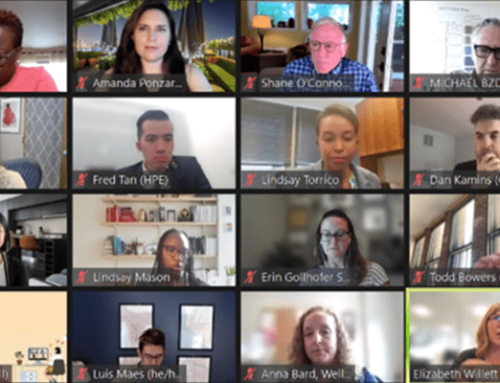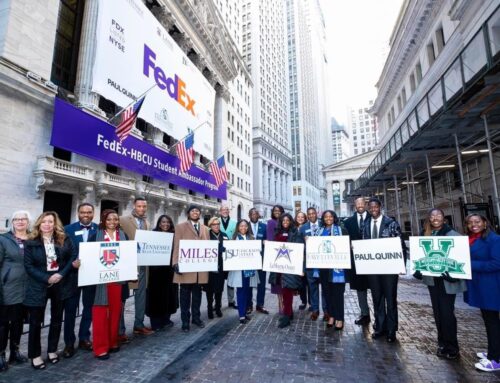By: S. Chris Edmonds;
Managing Results Is Half The Leaders’ Job
– The other half? Managing workplace values – how people treat each other at work.
What’s on your to-do list today? I’ll bet that “improving workplace relationships” isn’t on your list – but it’s something that all nonprofit executives and leaders should focus on daily.
Why? Because our workplaces aren’t very fun, inspiring, or validating places to hang out in.
Christine Porath found that 98% of the employees she’s interviewed over the past 20 years have experienced incivility or rudeness in the workplace. Make Civility the Norm on Your Team
Only 35% of employees across the globe are actively engaged at work. That number hasn’t shifted significantly in over two decades. Dismal Employee Engagement Is a Sign of Global Mismanagement
Respectful treatment of all employees at all organizational levels occurs in only 38% of global workplaces. 2017 Employee Job Satisfaction and Engagement: The Doors of Opportunity Are Open
Your organization may be much better than these studies indicate – but I’ll bet you know there are areas you need to improve upon.
The quality of your work culture is the leader’s responsibility.
Why don’t leaders invest as much time and energy in creating a healthy work environment as they do in managing results? Because they’ve never been asked to manage culture. Most don’t know how to do it. They’ve never experienced a successful culture change, much less led one.
The good news is that executives agree that culture matters. 80% of executives rated the employee experience – organizational culture, engagement, and the employee brand proposition – as very important or important. And only 22% believe their companies are excellent at building a positive employee experience. Improving the employee experience | Deloitte Insights
I work with organizations of all types and sizes around the globe, helping senior leaders create purposeful, positive, productive work cultures. My process follows three vital steps.
The first step, define, requires business owners to formalize their desired culture through an organizational constitution. An organizational constitution is a written document that specifies your company’s servant purpose, values and behaviors, strategies and goals.
Your servant purpose clearly describes your agency’s present day “reason for being” besides making money. Making money (through selling policies or – for that matter – selling cars or coffee, etc.) is certainly important for the long-term success of your business, but making money is not the end-all, be-all for many humans. Your team members know that making a profit is important to the success of the business, but a more natural motivation can make a huge difference.
A servant purpose describes what you do (your product or service), whom you do it for (your customers or consumers), and “to what end” – how what you do improves customers’ quality of life every day.
Most company mission or purpose statements don’t meet these criteria – and they don’t have a positive effect on employees. Here’s an actual purpose statement for a real company: “Creating superior value for our customers, employees, partners, and shareholders.”
Is it clear what they do? No (they are a tire company). Is it clear who the company’s primary “customers” are? No. Is it clear how what the company does improves others quality of life? No.
Compare that to this purpose statement from a pharmaceutical company (Bristol -Myers Squibb: “To discover, develop, and deliver innovative medicines that help patients prevail over serious diseases.” Mission, Vision & Values of Bristol-Myers Squibb Company
Is it clear what they do? Absolutely. Is it clear for who they do it? Absolutely. Is it clear to what end employees are toiling – how they improve customers quality of life? Absolutely.
Once you’ve formalized your servant purpose, senior leaders must define values in observable, tangible, and measurable terms – just as performance standards are defined in observable, tangible, and measurable terms. Very few companies have defined their values in measurable terms.
Only when values are behaviorally defined do they become actionable. Behavioral definitions shift values from vague ideas to clear requirements for trustful and respectful treatment of others in the course of one’s work.
One culture client, a seven-state region of the world’s largest retailer, defined their customer service value with behaviors like these:
- I initiate friendly hospitality by promptly and enthusiastically smiling and acknowledging everyone who comes within 10 feet.
- I ensure that each customer is assisted in finding requested items.
- I deliver a clean, fast, friendly experience to each customer.
These behaviors (three of eight of their service behaviors) are measurable. Someone could observe me working over a week’s time and be able to rate the degree to which I model these specific behaviors.
Strategies and goals are probably already defined in your organization. Including them in your organizational constitution ensures that team leaders and team members understand that values demonstration and performance accomplishment are equally important.
The hard part: Alignment
The second step, align, is the most important and most complex of this process. Senior leaders must demonstrate their organization’s valued behaviors in every interaction – and coach everyone else to do the same, every minute.
By formalizing your organizational constitution and announcing the new servant purpose, values and behaviors, etc., remember this: don’t assume that anyone will embrace your valued behaviors. They won’t do that until they see senior leaders living them, coaching them, praising them, and redirecting mis-aligned behaviors.
When senior leaders model your valued behaviors and hold everyone accountable for demonstrating your valued behaviors in every interaction, they make values as important as results.
One critically important piece of alignment is that you will no longer tolerate bad behavior from anyone. You don’t allow or ignore aggressive behavior, rude behavior, demeaning behavior, harassment, teasing, etc. ever again.
Just as you monitor performance traction with daily dashboards of key metrics, you must create a clear, reliable means to monitor values alignment. A custom values survey allows employees to rate their bosses on how well those bosses demonstrate your valued behaviors.
A values survey must be done regularly – at least twice a year. Some clients are using weekly pulse surveys (one question a week – takes 3 minutes for employees to complete it online with their smartphones or computers) to keep a more frequent tally of values alignment.
The third step, refine, happens every two years or so with a review of your valued behaviors. You’ll update the behaviors list by removing well-embraced behaviors (they won’t disappear in your environment), revising some behaviors, or adding new behaviors to address “opportunities” for better citizenship in your evolving work culture. Your servant purpose and values rarely change. Your strategies and goals might change annually.
Through these steps – define, align, and refine – you can craft a purposeful, positive, productive work culture. Don’t leave your culture to chance. Be intentional with an organizational constitution.
For over 28 years, S. Chris Edmonds has helped senior leaders create purposeful, positive, productive work cultures.
He is a speaker, author, and executive consultant who is the founder of The Purposeful Culture Group Purposeful Culture Group | S. Chris Edmonds. He’s one of Inc. Magazine’s 100 Top Leadership Speakers The Top 100 Leadership Speakers for 2018 | Inc.com and was a featured presenter at South by Southwest Driving Results Through Culture|SXSW 2015 Event Schedule.
Chris is the author of the Amazon best seller The Culture Engine The Culture Engine: A Framework for Driving Results, Inspiring Your Employees, and Transforming Your Workplace: S. Chris Edmonds: 9781118947326: Amazon.com: Books and five other books. He tweets on organizational culture, servant leadership, and workplace inspiration at @scedmonds S. Chris Edmonds (@scedmonds) | Twitter.
Chris’ crisp, rich Culture Leadership Charge video episodes can be found on YouTube S. Chris Edmonds – YouTube. Check out this culture refinement process: https://youtu.be/Fpj99XXeSqs








